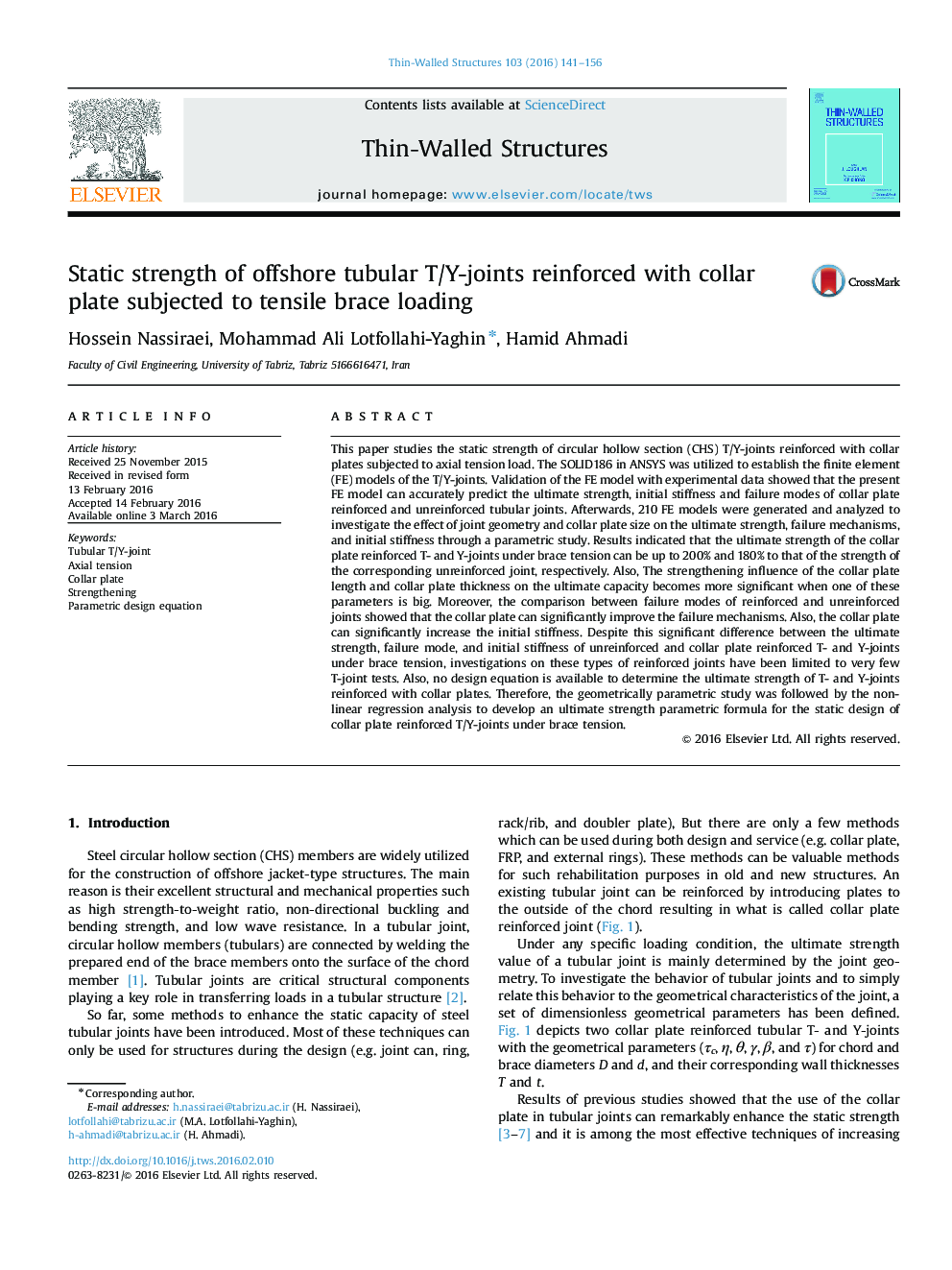| Article ID | Journal | Published Year | Pages | File Type |
|---|---|---|---|---|
| 308380 | Thin-Walled Structures | 2016 | 16 Pages |
•The ultimate strength and failure mechanisms of collar plate reinforced tubular T/Y-joints were investigated.•210 FE models were generated and analyzed for the parametric study of ultimate strength.•Effect of geometric parameters on the failure mechanism and initial stiffness were investigated.•A prediction formula for the axial tensile strength of the reinforce T/Y-joints is proposed.
This paper studies the static strength of circular hollow section (CHS) T/Y-joints reinforced with collar plates subjected to axial tension load. The SOLID186 in ANSYS was utilized to establish the finite element (FE) models of the T/Y-joints. Validation of the FE model with experimental data showed that the present FE model can accurately predict the ultimate strength, initial stiffness and failure modes of collar plate reinforced and unreinforced tubular joints. Afterwards, 210 FE models were generated and analyzed to investigate the effect of joint geometry and collar plate size on the ultimate strength, failure mechanisms, and initial stiffness through a parametric study. Results indicated that the ultimate strength of the collar plate reinforced T- and Y-joints under brace tension can be up to 200% and 180% to that of the strength of the corresponding unreinforced joint, respectively. Also, The strengthening influence of the collar plate length and collar plate thickness on the ultimate capacity becomes more significant when one of these parameters is big. Moreover, the comparison between failure modes of reinforced and unreinforced joints showed that the collar plate can significantly improve the failure mechanisms. Also, the collar plate can significantly increase the initial stiffness. Despite this significant difference between the ultimate strength, failure mode, and initial stiffness of unreinforced and collar plate reinforced T- and Y-joints under brace tension, investigations on these types of reinforced joints have been limited to very few T-joint tests. Also, no design equation is available to determine the ultimate strength of T- and Y-joints reinforced with collar plates. Therefore, the geometrically parametric study was followed by the nonlinear regression analysis to develop an ultimate strength parametric formula for the static design of collar plate reinforced T/Y-joints under brace tension.
